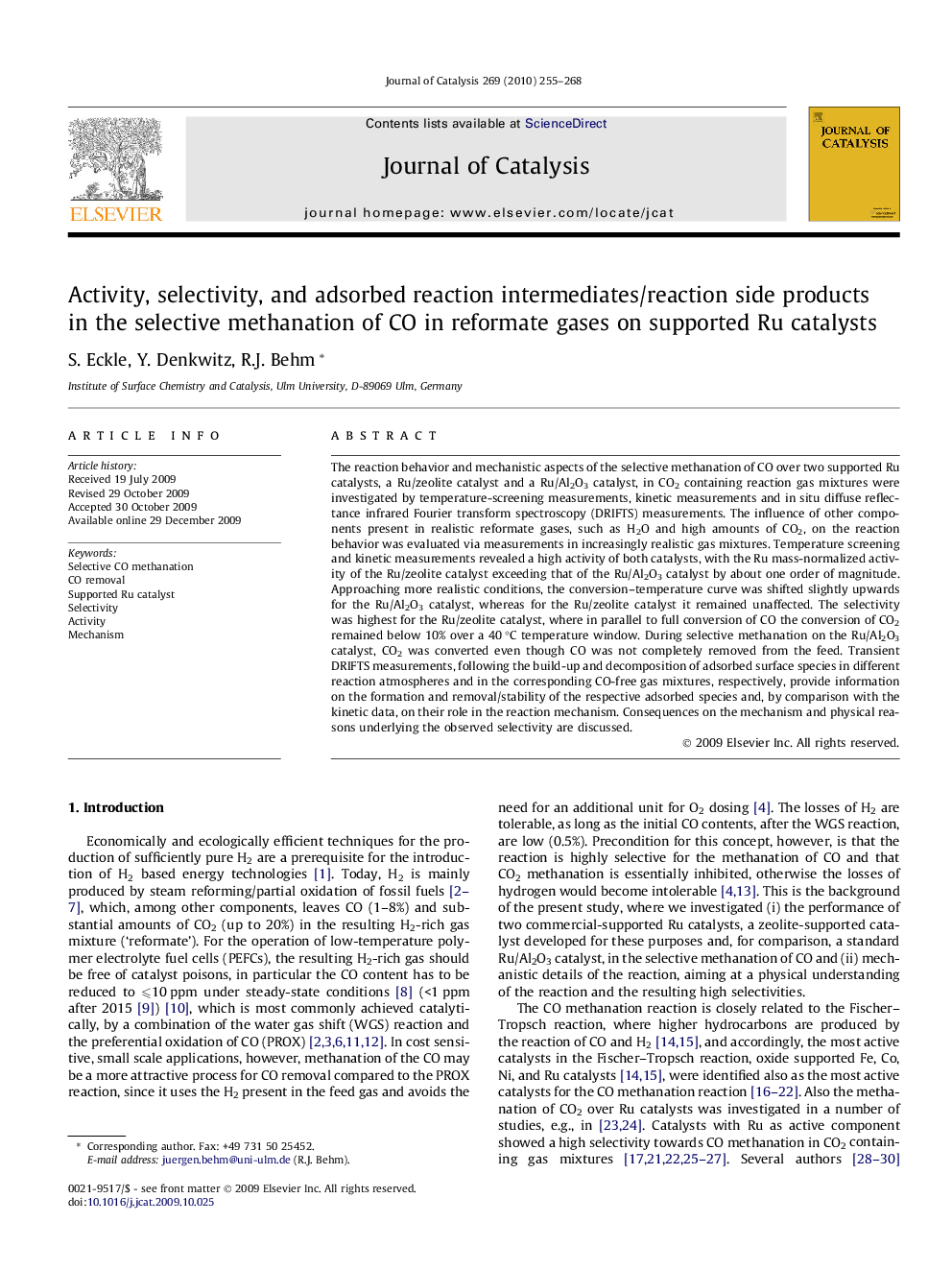| Article ID | Journal | Published Year | Pages | File Type |
|---|---|---|---|---|
| 62013 | Journal of Catalysis | 2010 | 14 Pages |
The reaction behavior and mechanistic aspects of the selective methanation of CO over two supported Ru catalysts, a Ru/zeolite catalyst and a Ru/Al2O3 catalyst, in CO2 containing reaction gas mixtures were investigated by temperature-screening measurements, kinetic measurements and in situ diffuse reflectance infrared Fourier transform spectroscopy (DRIFTS) measurements. The influence of other components present in realistic reformate gases, such as H2O and high amounts of CO2, on the reaction behavior was evaluated via measurements in increasingly realistic gas mixtures. Temperature screening and kinetic measurements revealed a high activity of both catalysts, with the Ru mass-normalized activity of the Ru/zeolite catalyst exceeding that of the Ru/Al2O3 catalyst by about one order of magnitude. Approaching more realistic conditions, the conversion–temperature curve was shifted slightly upwards for the Ru/Al2O3 catalyst, whereas for the Ru/zeolite catalyst it remained unaffected. The selectivity was highest for the Ru/zeolite catalyst, where in parallel to full conversion of CO the conversion of CO2 remained below 10% over a 40 °C temperature window. During selective methanation on the Ru/Al2O3 catalyst, CO2 was converted even though CO was not completely removed from the feed. Transient DRIFTS measurements, following the build-up and decomposition of adsorbed surface species in different reaction atmospheres and in the corresponding CO-free gas mixtures, respectively, provide information on the formation and removal/stability of the respective adsorbed species and, by comparison with the kinetic data, on their role in the reaction mechanism. Consequences on the mechanism and physical reasons underlying the observed selectivity are discussed.
Graphical abstractThe removal of CO in hydrogen rich containing feed gas via selective methanation was studied on two differently supported Ru catalysts. The kinetic activity is shown to be dependent on the amount of linearly adsorbed CO on Ru acting as active species.Figure optionsDownload full-size imageDownload high-quality image (74 K)Download as PowerPoint slide
